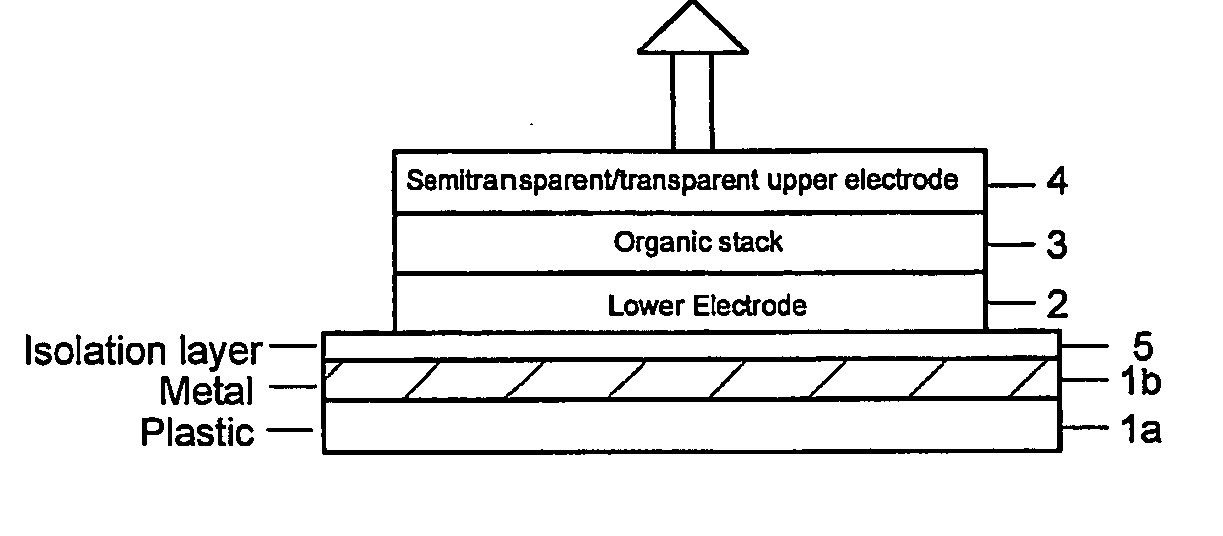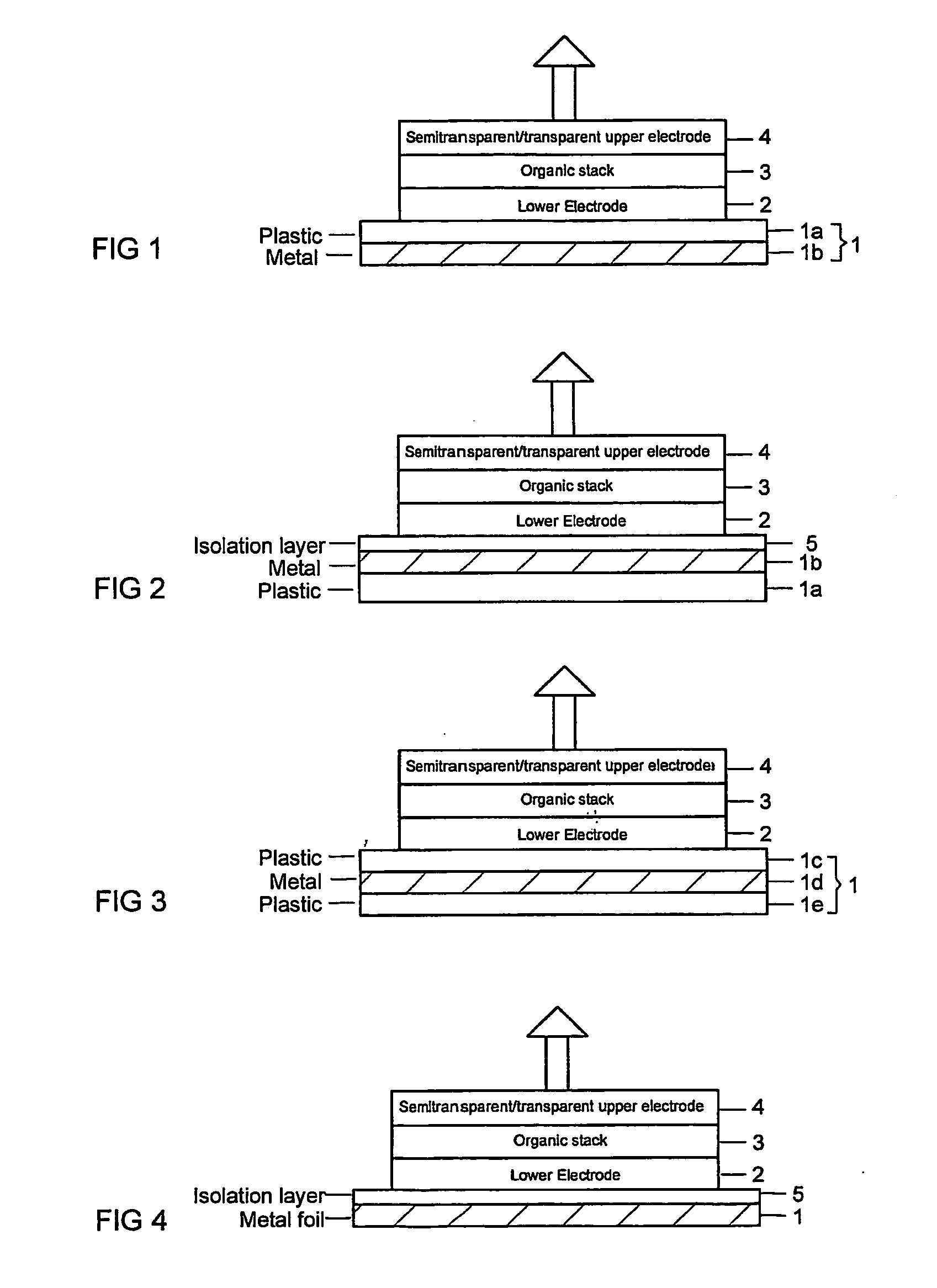Flexible Electroluminescent Devices
a light-emitting device and flexible technology, applied in the field of organic light-emitting devices, can solve the problems of short life of devices, oleds formed on ultrathin glass sheets have limited potential as flexible light-emitting displays, and ultra-brittle sheets, etc., to achieve the effect of reducing oxygen and moisture permeation, high flexibility, and superior barrier properties
- Summary
- Abstract
- Description
- Claims
- Application Information
AI Technical Summary
Benefits of technology
Problems solved by technology
Method used
Image
Examples
Embodiment Construction
[0014] Referring to FIG. 1, the representative OLED of the present invention comprises a flexible opaque substrate 1, a lower electrode 2 on top of the substrate, an organic stack 3 on top of the lower electrode, and a semi-transparent or transparent upper electrode 4 on top of the organic stack. In one embodiment, the flexible opaque substrate 1 is composed of a plastic layer 1a laminated to or coated with a metal layer 1b as shown in FIG. 1. Alternatively, it is also feasible to form the OLED on the metal side of the substrate 1 as shown in FIG. 2. In such a case, it may be desirable to form an isolation layer 5 between the metal layer 1b and the lower electrode 2. In another embodiment shown in FIG. 3, the flexible substrate 1 is composed of a metal layer 1d sandwiched between two plastic layers 1c and 1e. The metallic material used for the substrate 1 includes aluminum and other highly reflective metals. Aluminum is preferred because it is an excellent barrier against water and ...
PUM
| Property | Measurement | Unit |
|---|---|---|
| thickness | aaaaa | aaaaa |
| thickness | aaaaa | aaaaa |
| thickness | aaaaa | aaaaa |
Abstract
Description
Claims
Application Information
 Login to View More
Login to View More - R&D
- Intellectual Property
- Life Sciences
- Materials
- Tech Scout
- Unparalleled Data Quality
- Higher Quality Content
- 60% Fewer Hallucinations
Browse by: Latest US Patents, China's latest patents, Technical Efficacy Thesaurus, Application Domain, Technology Topic, Popular Technical Reports.
© 2025 PatSnap. All rights reserved.Legal|Privacy policy|Modern Slavery Act Transparency Statement|Sitemap|About US| Contact US: help@patsnap.com



